B2B: Scientific Notation
Do you know the difference between Standard Notation and Scientific Notation?
When a number is written using only numbers.
Example
65 890
0.0000397
Scientists frequently deal with numbers that are both very small and very big. For example, the diameter of a living cell is microscopic, while distances in space are immense. Using Standard Notation would involve too many zeros and could lead to confusion or calculation error. Thus, representing these numbers as powers of 10 is often the best practice.
Scientific Notation takes the form:
M x 10n where 1 ≤ M < 10, and n = the number of decimal places to be moved
**The exponent value, n, is equal to the number of decimal points moves (or "jumps") because both represent a factor of ten**
Importantly,
- a positive n indicates that the standard form is a large number
- a negative n indicates that the standard form is a small number
1. The speed of light in a vacuum is 299 792 458 metres per second. When rounded, this is approximately: 3 x 108 m/s. (We move the decimal point so there is only one digit to its left, a total of 8 places). Press the numbers (from right to left) to see how the decimal moves.
= 3 x 108

Remember: a positive n indicates that the standard form is a large number
10 8
10 7
10 6
10 5
10 4
10 3
10 2
10 1
Non-decimal numbers
← Numbers move from the right to the left
2. Small lymphocytes (white blood cells) are approximately 0.000007 metres in diameter. This is approximately: 7 x 10-6 m (Here we move the decimal point to the right, 6 places). Press the numbers (from left to right) to see how the decimal moves.
= 7 x 10-6

Remember: a negative n indicates that the standard form is a small number
10 -1
10 -2
10 -3
10 -4
10 -5
10 -6
Decimal numbers
Numbers move from the left to the right →
Please look at the Scientific Number Line. Select and move the slider to see how the magnitude of a number changes as you move to the left and right. Make note of the corresponding Standard Notation values.
Two things can be activated as the slider moves:
- the corresponding number in Standard Notation can appear above (0.00001 to 100 000)
- a graphic, ie. a donut, will appear in relative number – from a speck of a piece, through to one whole donut at 1 x 100 (=1), and over to a massive pile of donuts at the far right of the number line.



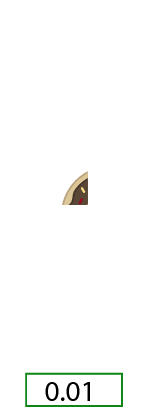
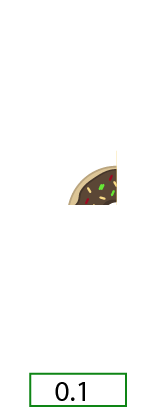

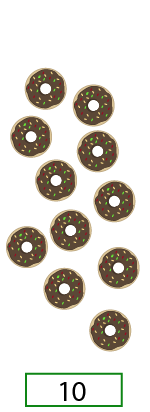

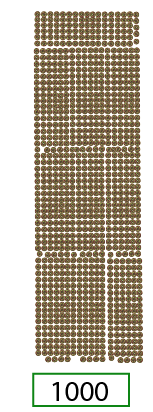
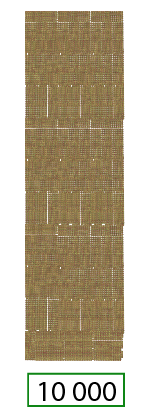
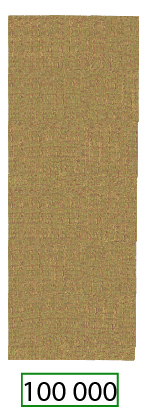

- Try converting the following "exact" numbers between Scientific Notation (M x 10n ) and Standard Notation:
a) 93 476 g
x 10

You’re right!

Not quite. Let’s take a look at that again.

The correct answers are displayed.
For ‘M’ to be 1 or greater, and smaller than 10, the decimal moves 4 places to the left. The exponent is (+) 4 (positive), indicating that the number is large.
- Try converting the following "exact" numbers between Scientific Notation (M x 10n ) and Standard Notation:
b) 0.00391 s
x 10

You’re right!

Not quite. Let’s take a look at that again.

The correct answers are displayed.
The decimal moved 3 places to the right so the exponent is (-) 3 (negative). Whenever a number starts out less than 1, the exponent is always negative.
- Try converting the following "exact" numbers between Scientific Notation (M x 10n ) and Standard Notation:
c) 4 x 101

You’re right!

Not quite. Let’s take a look at that again.

The correct answers are displayed.
Remember 100 = 1
- Please put your understanding to practice by performing the following calculations, in scientific notation:
a) (1.5 x 103 ) x (3.5 x 105 )
x

You’re right!

Not quite. Let’s take a look at that again.

The correct answers are displayed.
The first parts are multiplied together and the exponents are added together.
- Please put your understanding to practice by performing the following calculations, in scientific notation:
b) (63.1 x 1012 ) ÷ (1.1 x 103 )
x

You’re right!

Not quite. Let’s take a look at that again.

The correct answers are displayed.
The first parts are divided and the exponents are subtracted. We rounded to 2 decimal places.
- Please put your understanding to practice by performing the following calculations, in scientific notation:
c) (4 x 105 ) ÷ (0.5 x 10-3 )
x

You’re right!

Not quite. Let’s take a look at that again.

The correct answers are displayed.
The first parts are divided and the exponents are subtracted, 5 – (-3) = 5 + 3 = 8.
Sometimes, the best way to make numbers more manageable is simply to convert the units of measurement. For example, rather than describing my commute distance as approximately “30 000m, each way”, it would be simpler to say “30km”. However, sometimes, like when performing calculations, units have to be converted not for simplicity’s sake but because units need to agree with each other.
Please be sure to go over the information provided in “Standard Units of Measurement” which the international community has agreed upon – so that information can be shared and understood – and with which you must comply. Save it for future reference (e.g. exam preparation).
Think back to the number line slider you saw earlier. It is shown here but has been modified to include unit prefixes. Both systems of naming are based on powers of ten.
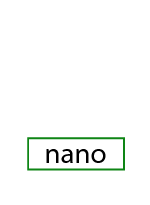
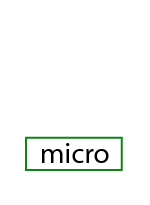
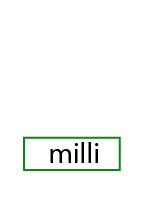
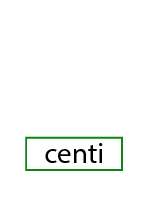
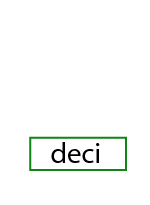
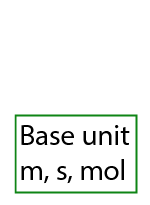
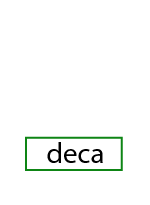
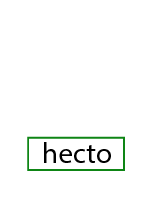
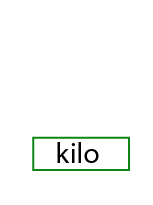
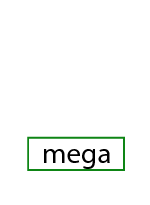
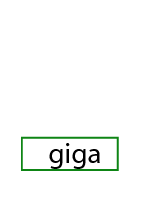

Now, please take some time to practice your skills at unit conversion and naming.
xxxxxxxxx
Standard Notation
With a Prefix
Scientific Notation
Distance around
the Equator
40 075 000 m
mm
km
x
m
Diameter of hair
0.000045m
cm
μm
x
m
Number of seconds
in 24 hrs
86 400s
hs
ms
x
s
Great job!
That was a great attempt. Let’s take a minute to review your thinking. If it’s necessary, go back to the slide bar and review the prefixes and scientific notation concepts.
The correct answers are displayed.